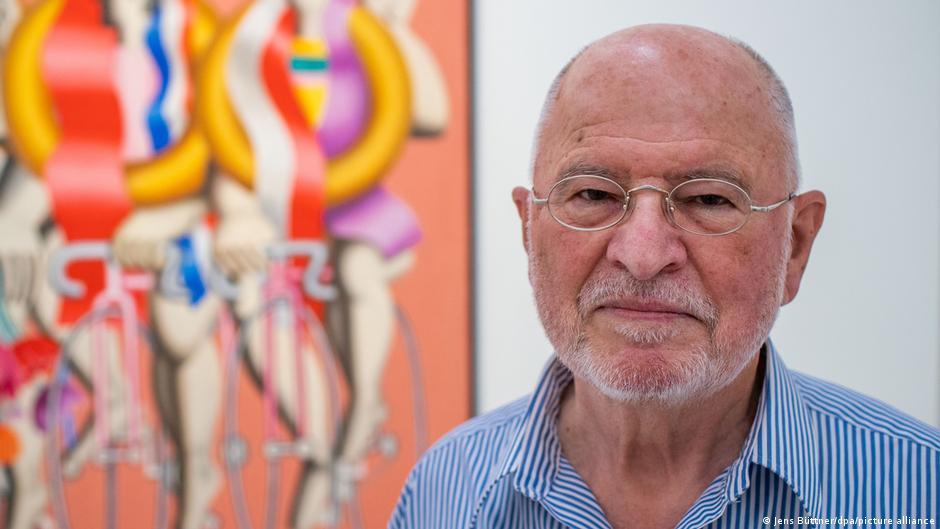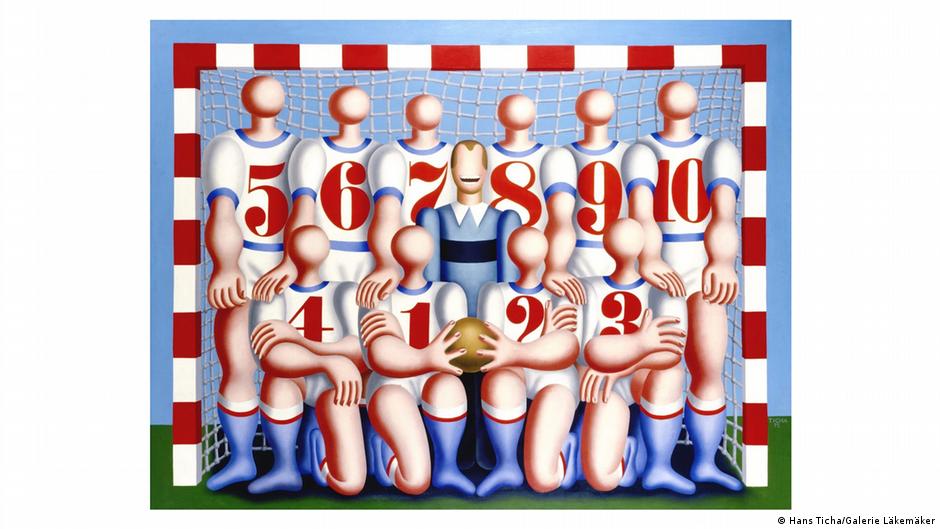Just In
- 3 hrs ago

- 7 hrs ago

- 10 hrs ago

- 11 hrs ago

Don't Miss
- Movies
 Make A Statement Like Dia Mirza In A Beige Silk Organza Saree This Summer, Here's Where You Can Get The Piece
Make A Statement Like Dia Mirza In A Beige Silk Organza Saree This Summer, Here's Where You Can Get The Piece - Sports
 Highest Powerplay Score In IPL: Sunrisers Hyderabad Pummell Delhi Capitals to Post Highest T20 Score In First 6 Overs
Highest Powerplay Score In IPL: Sunrisers Hyderabad Pummell Delhi Capitals to Post Highest T20 Score In First 6 Overs - Finance
 18K, 22K, 24K Gold Prices India Get Cheaper: Yellow Metal Prices Fall On Weekend
18K, 22K, 24K Gold Prices India Get Cheaper: Yellow Metal Prices Fall On Weekend - Education
 UP Board Result 2024: 82% of Jail Inmates Passed the Class 12 and 97% of the Class 10
UP Board Result 2024: 82% of Jail Inmates Passed the Class 12 and 97% of the Class 10 - News
 Bengaluru Water Crisis: PM Modi Slams Karnataka Congress, Says Mismanagement Turned Tech City To Tanker City
Bengaluru Water Crisis: PM Modi Slams Karnataka Congress, Says Mismanagement Turned Tech City To Tanker City - Automobiles
 Tata Altroz Records a 55% Sales Growth in March 2024
Tata Altroz Records a 55% Sales Growth in March 2024 - Technology
 Best Noise-Cancelling Earbuds Under Rs 5,000: CMF Buds Pro, Redmi Buds 5, Realme Buds Air 5, and More
Best Noise-Cancelling Earbuds Under Rs 5,000: CMF Buds Pro, Redmi Buds 5, Realme Buds Air 5, and More - Travel
 Journey From Delhi To Ooty: Top Transport Options And Attractions
Journey From Delhi To Ooty: Top Transport Options And Attractions
Underground Pop Art In Erstwhile East Germany Before The Fall Of The Berlin Wall

"Art, science and their teaching are free," is written in Article 34 of the 1949 constitution of the former German Democratic Republic (GDR), commonly known as East Germany.
Artists like Hans Ticha can only laugh at this. "The works that I painted in my studio, I could only show to my wife and a friend," he recalls. His studio was also the target of several break-ins. "Both times it was very mysterious. I had the paintings leaning back to front against the wall, with strips of paper between them, so I could track if someone turned them over." Ticha continued to paint secretly in his studio in Berlin's Prenzlauer Berg district — undaunted and determined to devote himself to his art.
Socialist Realism
Contrary to what the constitution guaranteed, culture was not free. All areas of culture were under the purview of the East German Communist Party — often referred to by its German acronym, SED.
The GDR's cultural policy aimed to educate people in the spirit of socialism. Thus, "socialist realism" was the ideologically prescribed style of art. Happy peasant women and proud factory workers were among the motifs that were, in the words of GDR head of state Walter Ulbricht, a "truly popular realistic art."
Everything else — formalism, pop art, avant-garde, modernism — was frowned upon and forbidden.
In the 1960s, the GDR pursued a "policy of clear-cutting" in the area of culture. The 11th Plenary Sitting of the SED Central Committee marked a turning point in the GDR's cultural policy. Drastic measures were taken and numerous films, plays, books and music groups were banned. Works that were labeled "anti-socialist," "anti-class" or "formalist" were not allowed to be published.
This was also in line with an initiative announced at a conference in April 1959 known as the Bitterfelder Weg or Bitterfeld Path. It was named after the place in which it was held, namely the industrial town of Bitterfeld in the German state of Saxony-Anhalt.
The conference sought to connect the working class with the artists of the time to form a socialist national culture. Artists and writers were encouraged to visit factories and get to know the workers, who were to be both the focus and audience of their work.
Workers, on the other hand, were to learn how to create art themselves, as this was seen as an important element of the well-rounded socialist personality.
Anyone who expressed criticism of the GDR was subjected to harassment. For example, Bernhard Heisig was removed as director of the Leipzig Academy after a speech in 1964 in which he spoke out against the patronizing of artists and called for the acceptance of modern artistic means of design.
The Berlin Wall And The 'Policy Of Clear-Cutting'
Ticha, who first studied in Leipzig until 1964, and then at the Berlin-Weissensee School of Art, remembers these times. "Of course, that was a strong restriction. That's why I switched within the university from painting to graphic art, where it was about applied and commercial art, because I didn't want to expose myself to this pressure."
He shared the pictures he painted at home with only one teacher at the art college. "I brought my works to the college well wrapped up. This was formalist art. If anyone had seen them, it could have led to heated discussions or even got me expelled. My teacher, Kurt Robbel, would double lock the door from the inside before I showed him the pictures," Ticha recalls.
To win over the younger population, the new SED General Secretary, Erich Honecker, introduced the principle of "breadth and diversity" in the early 1970s. Thus, bringing a certain degree of openness to cultural policy. But this did not last long.
A few years later, the confrontation with creative artists intensified again and many writers were excluded, stripped of their citizenship or were forced to move elsewhere within the country.
Ticha recalls an incident in 1977. "My work 'Mannschaft' (or 'Team' in English) was to be exhibited in Dresden at the GDR art exhibition. I went to the opening, but my painting was not there. I met another colleague who was also looking for his painting. Later we found out that the paintings were deposited in a separate, locked room."
Honecker was also present at this event. Ticha suspects that because his piece was rendered in the non-conformist pop art style instead of the GDR sanctioned socialist realism, the organizers chose to hide it from Honecker to protect his sensibilities. The piece was nevertheless exhibited later.

'Agit-Pop': How Pop Art Came To The GDR
Ticha made a living from book illustrations and commercial graphics. The art that interested him though was frowned upon in the GDR, namely, pop art. With his bright colors and simplified forms, he went his own way and was one of the few in the GDR to use the visual language of pop art.
"There was scarce information about this style. I remember a single article in an NBI, an illustrated magazine in the GDR, which I happened to get my hands on. There were several pictures of American pop art — but they were very small and grainy. The article disparaged the art style; I bought the magazine not because of the article, but because of the illustrations," he recalls.
NBI stands for Neue Berliner Illustrierte (or New Berlin Illustrated). It was one of the GDR's most popular weeklies, and featured a mix of politics, profiles, social trends, sport and culture, somewhat like the American LIFE magazine.
Ticha adopted the pop art style but adapted the themes to his reality in the GDR. "The dominant motif of American pop art was mass consumption, which was not an issue in the GDR at all. I took the propaganda of the GDR as a motif, the way the GDR portrayed itself. That was my subject, which I pursued to the end."
The term "agitprop," a combination of agitation and political propaganda became agit-pop — a style coined by artists like Ticha with their parodies about state power over the working class.
The Wall In The Book
When the Berlin Wall was built in 1961, it became even more difficult to exchange information with fellow artists from West Germany. Criticizing the construction of the Wall, questioning it, or even treating it covertly in one's works was dangerous.
Ticha recalls a book illustration he had to do. "I was allowed to illustrate the satirical science fiction novel War with the Newts by Karel Capek. The word 'wall' appeared in the text, so I drew a wall. The artistic director said he would remove the illustration, as it would jeopardize the project," says Ticha.
Publication was delayed for a few years for technical reasons, but in the end the book came out. "The wall was in it — whether he forgot or had a fit of courage, I don't know. That's just conjecture," laughs Ticha.

And it would not be the last wall painting he did. His work "The Wall" is on display today at the Marienfelde Refugee Transit Camp Memorial. This transit camp was one of three that was operated by West Germany and West Berlin during the Cold War to deal with the vast numbers of refugees from East Germany, especially between 1950 and 1961.
After the fall of the Wall, Ticha moved to Mainz, and today the 80-year-old artist lives near Frankfurt.
This article was adapted from the German by Brenda Haas.
Source: DW
-
 art cultureBook review: 'Never Out Of Print: The Rupa Story; The Journey Of An Independent Indian Publisher
art cultureBook review: 'Never Out Of Print: The Rupa Story; The Journey Of An Independent Indian Publisher -
 home n gardenHow To Select Art For Your Home, 10 Tips To Define Your Space With Right Artwork!
home n gardenHow To Select Art For Your Home, 10 Tips To Define Your Space With Right Artwork! -
 home n gardenHow To Create A Gallery Wall, 5 Steps To Beautify Walls With Art!
home n gardenHow To Create A Gallery Wall, 5 Steps To Beautify Walls With Art! -
 insyncGJEPC Organises Event To Showcase Finest Indian Jewels to Ambassadors Of Leading Nations
insyncGJEPC Organises Event To Showcase Finest Indian Jewels to Ambassadors Of Leading Nations -
 art cultureBook Review Of 'Blood Island': Humanity Was Killed In Marichjhapi In 1979 - India Slept!
art cultureBook Review Of 'Blood Island': Humanity Was Killed In Marichjhapi In 1979 - India Slept! -
 home n garden5 Expert Tips To Select Perfect Artwork For Your Space
home n garden5 Expert Tips To Select Perfect Artwork For Your Space -
 home n garden5 Creative Ways To Decorate A Blank Wall
home n garden5 Creative Ways To Decorate A Blank Wall -
 art cultureOrpheus Productions' Critically Acclaimed Play 'Kirdaar' To Enchant Audiences At Jagriti Theatre In Bangalore
art cultureOrpheus Productions' Critically Acclaimed Play 'Kirdaar' To Enchant Audiences At Jagriti Theatre In Bangalore -
 art culturePop Art Pioneer Claes Oldenburg Passes Away At 93: A Look At His Work
art culturePop Art Pioneer Claes Oldenburg Passes Away At 93: A Look At His Work -
 art cultureGerman Visual Artist Gerhard Richter Turns 90: A Look At His Journey In Art
art cultureGerman Visual Artist Gerhard Richter Turns 90: A Look At His Journey In Art -
 art cultureRenaissance Italian Painter Sandro Botticelli's Work Sells For $45 Million At Sotheby's Auction In New York
art cultureRenaissance Italian Painter Sandro Botticelli's Work Sells For $45 Million At Sotheby's Auction In New York -
 art cultureGreek Artist Alekos Fassianos Passes Away: Tribute
art cultureGreek Artist Alekos Fassianos Passes Away: Tribute


 Click it and Unblock the Notifications
Click it and Unblock the Notifications



